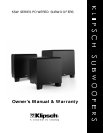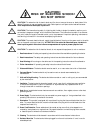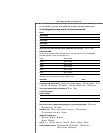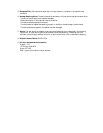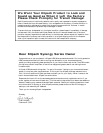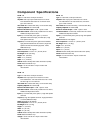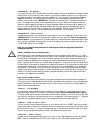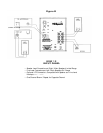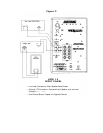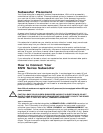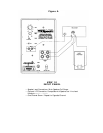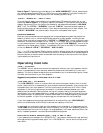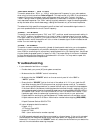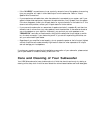
“SPEAKER IN” / ALL MODELS
For parallel connection of the subwoofer and main speaker wires (main speakers full range), connect
the subwoofer input wires to the main channel, right and left, speaker outputs of your amplifier or
to a secondary set of main speaker terminals (speaker B) if your amplifier is so equipped. Refer to
Figure A. Alternately, you can connect the wires from your main speakers, along with the sub-
woofer’s input wires, to the “SPEAKER IN” terminals on the subwoofer. This may be more conve-
nient if the subwoofer is closer to your speakers than it is to your electronics. Please consult your
dealer for details regarding connection of multiple speaker cables to a common set of speaker out-
puts. For optimal performance, use equal lengths (left and right inputs) of the same high quality
speaker cable that you are using to connect your main speakers. Consult your Klipsch dealer for
recommendations. Refer to “About Speaker Wire Connections” for more detail.
“SPEAKER OUT” / KSW 12 AND 15
If a bass limited signal (high pass filtered) is being sent to your main speakers, connect them to the
“SPEAKER OUT” terminals on the subwoofer instead of to your amplifier. Refer to the righthand
side of Figure B. The high pass filter on these outputs will remove the bass frequencies below 100Hz
from your main speakers, lowering distortion and increasing their dynamic range. Also refer to the
“LOW PASS” section for more detail.
Note: Do not connect another subwoofer to these outputs as they are high pass filtered (bass
frequencies removed).
ABOUT SPEAKER WIRE CONNECTIONS
When making any type of speaker wire connection be sure to observe proper polarity (+ to + and -
to -). If the polarity of one of the subwoofer input wires is reversed, the output of the subwoofer will
be diminished. Most speaker wire is color-coded or has some distinguishing feature differentiating
the two conductors. Speaker wire connectors on most loudspeakers and amplifiers are also color-
coded. Typically, RED is positive (+) and BLACK is negative (-), or ground. It does not matter which
wire conductor is connected to the positive or negative connection of your equipment as long as you
are consistent. Be sure that the connections from the amp to all of the speakers in your system are
connected in a like manner. If this is not done, the quantity of bass will be reduced and the stereo
image will be compromised. Be careful to avoid excess bare wire or loose strands of wire at the con-
nections. This could cause a shorting condition between adjacent positive and negative terminals,
damaging your speakers and amplifier.
LINE LEVEL CONNECTIONS
These connections should be made using high quality shielded interconnect cables terminated with
RCA phono plugs. These cables should be as short as possible and kept away from noise generating
electrical equipment such as digital electronics or electric motors. Consult your Klipsch dealer for
specific cable recommendations.
“LINE IN” / ALL MODELS
For best results, these jacks should be connected to a non-filtered (full-range) subwoofer or main
channel pre-amp output on your receiver or pre-amp/processor. Refer to the lefthand side of Figure B.
This input signal should contain the normal bass information present in the main left and right chan-
nels. When connecting to a component that has only a single pair of pre-amp outputs, “Y” adapters
(splitters) may be used to feed a signal to both the subwoofer and the power amplifier.
“LINE IN” / KSW 10 and 12 ONLY
You can connect a mono subwoofer output on your electronics to the “L/LFE” input using a single
interconnect cable. If there is an inadequate amount of subwoofer volume even with the level control
set to maximum, add a “Y” cord to the subwoofer end of the cable and connect to both line inputs.
This will provide a significant (6dB) increase in the subwoofer’s output level.
“LINE OUT” / KSW 15 ONLY
If a bass limited (high pass filtered) signal is to be sent to your main speakers, connect the “LINE
OUT” jacks on the subwoofer to the line level inputs on your main channel power amplifier.
!




